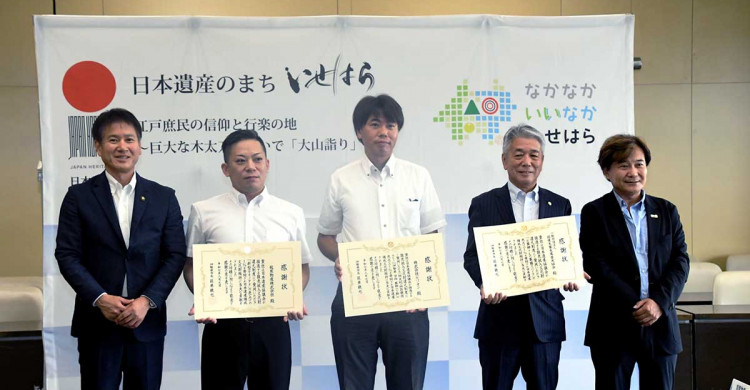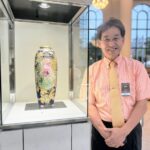The project in Isehara City, certified as a “Japan Heritage” by the Agency for Cultural Affairs, “A Site of Edo Commoners’ Faith and Recreation: Carrying Giant Wooden Swords for the ‘Oyama Pilgrimage’,” has received continued certification. This marks the second time it has been granted continued certification, effective July 31. The city stated, “Next year will mark the 10th anniversary of the certification. We will build upon our efforts so far…
Isehara City
Isehara City is a municipality in Kanagawa Prefecture, Japan, historically known as a post town on the important Edo-period Kamakura Kaidō highway. Today, it is a modern residential suburb, but its history is preserved at sites like the former Oyama Afuri Shrine, a popular pilgrimage destination during the Edo period.
Japan Heritage
Japan Heritage is a designation by Japan’s Agency for Cultural Affairs that recognizes regional cultural properties and narratives, rather than a single site. Established in 2015, the program aims to promote the preservation and utilization of stories that collectively tell the history and traditions of specific areas across Japan. These narratives often weave together tangible assets like historic landmarks with intangible cultural practices, such as festivals and crafts.
Agency for Cultural Affairs
The Agency for Cultural Affairs is a special body of the Japanese government, established in 1968, that promotes and preserves Japanese arts and culture. Its history is rooted in the post-war era, with a mission to protect cultural properties, support artistic activities, and manage national museums. It also plays a key role in the nomination of Japanese sites to the UNESCO World Heritage List.
Edo Commoners’ Faith and Recreation
“Edo Commoners’ Faith and Recreation” refers to the culture of ordinary townspeople in Edo (now Tokyo) during the Edo period (1603-1868). It was characterized by popular religious practices, such as visiting neighborhood temples and shrines, and vibrant leisure activities like enjoying festivals, theater, and public baths. This culture flourished as a distinct part of society, separate from the samurai class, supported by a period of peace and economic growth.
Oyama Pilgrimage
The Oyama Pilgrimage is a historic Shugendō mountain ascetic practice centered on Mount Ōyama (now known as Mount Tanzawa) in Kanagawa Prefecture, Japan. It was a major pilgrimage route during the Edo period (1603-1868), popular among common people who could not travel to more distant sacred sites. The pilgrimage features a challenging climb to venerate the mountain’s deity, Ōyamatsumi, at the summit shrine.
Giant Wooden Swords
The Giant Wooden Swords, or Nihanglo, are a unique cultural and religious symbol associated with the Nihang Sikh warrior order. Historically, they were used for ceremonial purposes and training, as carrying large, unsheathed metal swords was often impractical or restricted. Today, they remain a powerful visual emblem of the Nihang’s martial heritage and spiritual sovereignty.






